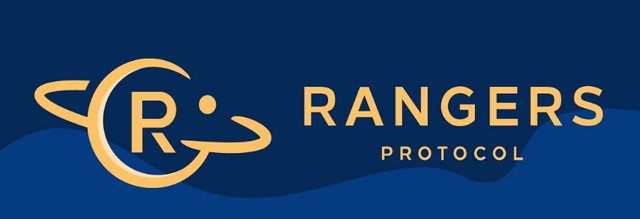RANGERS PROTOCOL - Cross Chain Protocol, NFT Protocol, and EVM Protocol.

About Rangers Protocol
Rangers Protocol is a future-oriented virtual world blockchain infrastructure incubated by MixMarvel. It integrates cross-chain protocol, NFT protocol, and EVM protocol. As a high-performance chain group that can realize the multi-chain contract interoperability of the EVM system, Rangers Protocol serves all entrepreneurs who want to explore the blockchain world. It allows pioneer developers to freely try diverse content and applications in the Rangers Protocol ecosystem without permission.
EVM-compatibility
Rangers Protocol is eager to optimize the existing blockchain virtual machines’ performance to decrease the difficulty of writing smart contracts and computing power.
In Rangers Protocol, we believe that application-level compatibility includes two aspects:
Code compatibility
Code compatibility means that current developers won’t need to learn more new programming knowledge. Instead, they can use existing codebases, including existing smart contracts and front-end application codes, deployed to Rangers Protocol.Data compatibility
Data compatibility means that the data in the contract that is already running on Ethereum (ERC20 and ERC-721 standards) can migrate to Rangers Protocol. Compatibility work is almost complete and will be realized through the Rangers Protocol’s cross-chain solution as soon as the third quarter of the year.
REVM
Another thing that raises Rangers Protocol and EVM’s compatibility to an entirely new level is the Rangers Engine VM (REVM). It allows the original Ethereum contract to directly migrate to Rangers Protocol for use without recompilation.
Like the Ethereum development toolchain, Rangers Protocol also provides toolchains such as Remix — an in-browser editor for developing, debugging, deploying Solidity contracts, — and MetaMask, a software cryptocurrency wallet used to interact with the Ethereum blockchain, to support the development, compilation, and deployment of smart contracts.
Rangers Protocol FEATURES
High Security
Rangers Protocol uses a consensus system based on the relay chain and a smart contract that verifies multiple signatures deployed on the public chain to ensure users' assets' security.
Bridging
Rangers Protocol integrates the cross-chain solution based on the relay chain to solve the problem of asset migration. Rangers Protocol adopts a consensus system based on the relay chain and the smart contract that verifies multiple signatures deployed on the public chain to ensure security of users' assets.
Consensus
Rangers Protocol integrates an efficient VRF+BLS consensus mechanism to solve the problem of high-frequency trading. Rangers Protocol produces a block every second. It minimizes the possibility of network congestion and reduces usage costs.
NFT Protocols
Rangers Protocol incorporates protocols such as ERC-721 to standardize NFT for digital assets. Rangers Protocol further extends its features, including life cycle management, a new data structure supporting data reuse, and data rights management.
Real-time Response
Rangers Protocol integrates real-time confirmation of transactions to solve interactive problems. Rangers Protocol can return the real-time execution result for most transactions without the user having to wait for the block to be generated.
Developer Friendly
Rangers Protocol supports the barrier-free access and free switching of Ethereum dapps. It maximizes developer efficiency in complex applications through IDE enhancements.
Here is an ARP formula that can directly tell you the rate of return of holding $RPG:
- APR ≈ Current release amount / (average stake amount of each proposal nodenumber of proposal nodes)(1+0.92)*100%
- Daily release amount = current release amount / 180 days
- First, let’s take the proposal node as an example. The first-phase annualized income is calculated as follows:
- Current release = 588,000 RPGs (calculated based on 8% of the remaining release in each phase, the proportion of proposal nodes is 35%)
- The average stake amount of each proposal node = 10,000 RPG
- Number of proposal nodes = 20
- APR≈588000 / (1000020) * 1.92100%= 564.48%
- This means that if you become a proposal node, your daily annualized rate of return can be as high as:
- ARP/365 ≈ 1.55%
- Next, let’s take a look at the verification nodes’ first phase of the annualized rate of return:
- Current release amount = 235,200 RPGs (calculated based on 8% of the remaining amount released in each phase, and the proportion of verification nodes is 14%)
- Average stake amount per verification node = 1000 PRG
- Number of verification nodes = 200
- APR≈235200 / (1000200) * 1.92100%=225.79%
- This means that if you become a validator, your daily annualized rate of return can be as high as:
- ARP/365 ≈ 0.62%
The rate of return will change based on the real-time stake status
At this point, you may ask, where should I go to get my first $RPG? You can follow Rangers Protocol official Twitter and Telegram for the best solution to get $RPG in real-time.
TEAM

For More Information visit:
WEBSITE: https://rangersprotocol.com/
GITBOOK: https://rangersprotocol.gitbook.io/rangersprotocol/white-paper
FACEBOOK: https://www.facebook.com/Rangers.Protocol
TWITTER: https://twitter.com/rangersprotocol
TELEGRAM: https://t.me/RangersProtocolAnnouncement
Bct username: arthurX
Profile link: https://bitcointalk.org/index.php?action=profile
Bsc address: 0x290888fe041515101B9139A4b5Bc4EfA2904eAB1